Parkinson Cowan L50GDWN, L50GDWL, L50GDBNG, L50GDBL, 1154864 User Manual
...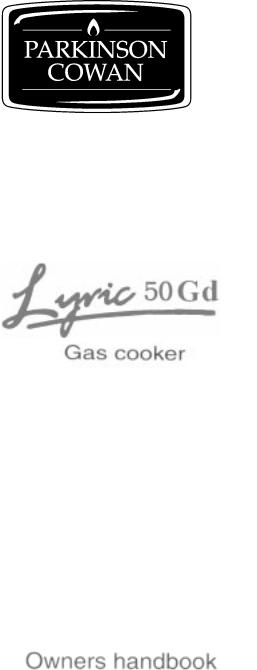

Introduction
L Y R I C 5 0 G d
Introduction
This gas cooker has been designed and manufactured to all the necessary British Standards. The cooker complies with European Council Directive 90/396/EEC. It also carries the C.E. mark.
It is important that you understand how to use and care for the cooker properly before you use it for the first time.
We have written this booklet with your safety in mind. Read the booklet thoroughly before you use the cooker. Keep the booklet in a safe place so that anyone who uses the cooker can read it. Pass the booklet on with the cooker if you give or sell it to someone else.
For your safety
This cooker is designed for domestic use to cook food. You must not use it for any other purpose. It is not designed for commercial use.
Keep children, babies and toddlers away from the cooker at all times and do not allow them to sit or climb onto the drop down oven door.
The installation instructions that came with the cooker tell you how and where it can be fitted. If the cooker is already installed you must make sure that all instructions have been followed. If you are in any doubt ask a registered person. More details on installation on page 25.
We have included several drawings to show the right and wrong way of doing things.
The right way will have a smiling face by it.
A sad face shows something is wrong.
Important: Make sure you remove the sales stickers before you use this cooker.
2
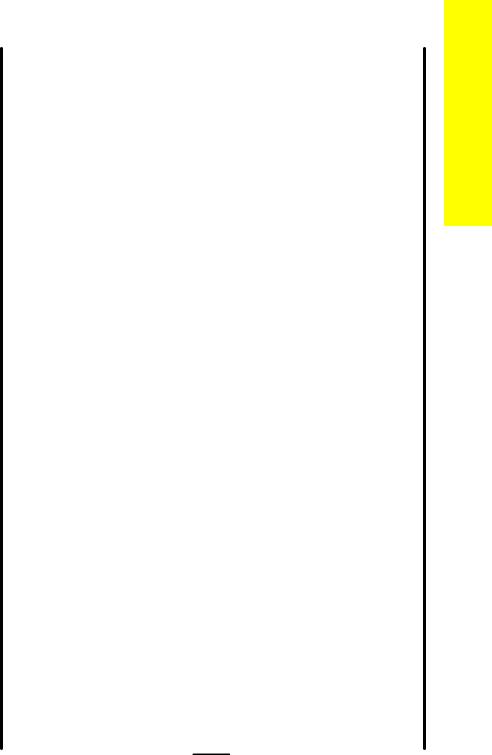
L Y R I C 5 0 G d
Contents |
Page |
Lighting the cooker |
4 |
|
|
The grill |
6 |
|
|
The hotplate |
8 |
|
|
The oven |
11 |
|
|
Oven cooking chart |
14 |
|
|
Slow cooking |
17 |
|
|
Care and cleaning |
20 |
|
|
Installing the cooker |
25 |
|
|
General information |
27 |
|
|
What is wrong and why? |
29 |
|
|
Servicing |
31 |
|
|
Installation Instructions |
30 |
|
|
Technical data |
32 |
|
|
Safety requirements/ventilation |
33 |
|
|
Location of appliance/installation |
34 |
|
|
Testing |
36 |
|
|
Contents
3
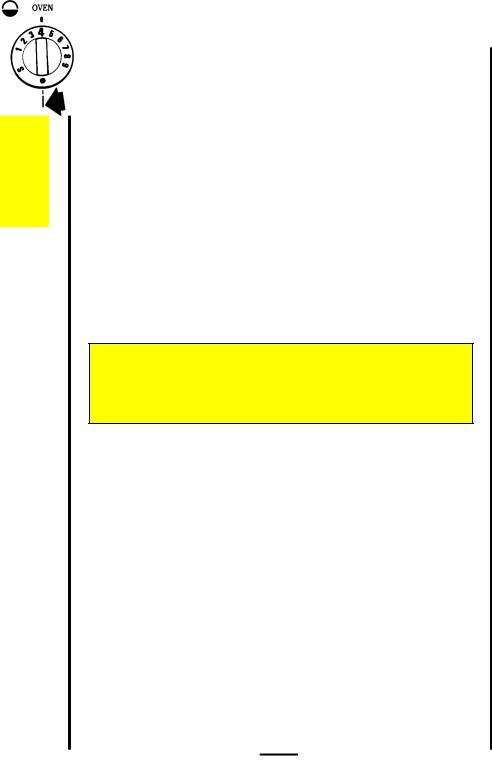
Lighting the cooker
L Y R I C 5 0 G d
Lighting the cooker
The ignition system works by means of a battery. Details on how to replace the battery are given on page 27.
Grill and hotplate
To light
1Push in the control knob and turn to the large flame symbol (highest setting), and press the ignition button immediately. When the burner has lit release the button.
Warning: If the ignition button is not pressed immediately a build up of gas may cause the flame to spread.
For your safety
Never cover the grill pan or grid with foil as this can lead to grill fires.
Oven
To light:
1Open the oven door.
2Push in the control knob, turn it to gas mark 9 and press the ignition button immediately. When the burner has lit release the button. There will only be small flames at first.
3Now turn the control knob to the gas mark you want.
4Wait until the burner is showing large flames.
5Close the oven door.
4
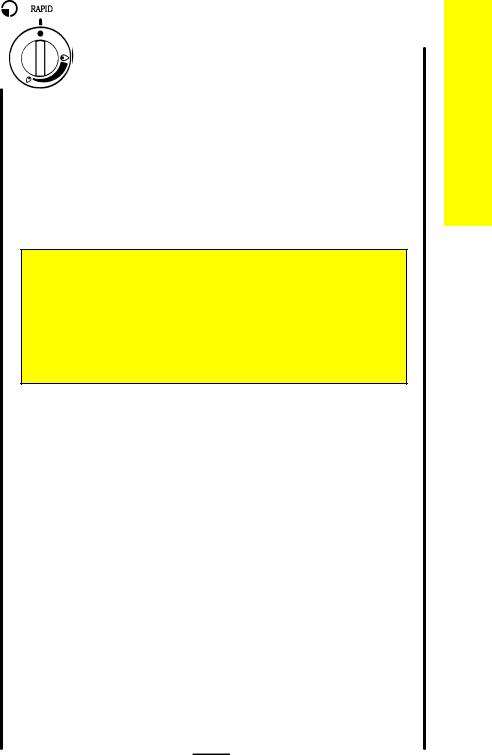
L Y R I C 5 0 G d
To turn off any burner
1Push in the control knob and turn it to the off position. This is shown by a large dot.
For your safety
When you are lighting any burner check that it has lit before you leave the cooker.
When you are turning off a burner, do not leave the cooker until the flame has gone out.
Lighting the cooker
5

The grill
L Y R I C 5 0 G d
The grill
The grill is a high-speed grill. The instructions below tell you how to vary the heat setting and how to change the height of the trivet to suit the food you are cooking. You should remember to turn the food regularly.
You should not use the grill to keep food warm as it will continue to cook the food.
For your safety
Never cover the grill pan or grid with foil as this can lead to grill fires.
Heat control
The grill control gives two heat settings.
The control knob turns to the left from 'OFF' to 'HIGH' and then to 'LOW'. The high setting should be used for fast cooking such as toast. Use the low setting to cook thicker food such as chicken after it has been browned on the high setting.
Grill pan
The pan is designed so that you can pull it forward but it will stay supported. To remove the pan push it back as far as possible to lift it off. Replace it in reverse order.
For your safety
After replacing the pan, pull it out to make sure it has fitted back properly.
Cooking positions
Most food should be cooked on the trivet in the grill pan. You can turn the trivet over to suit different thicknesses of food.
You can place some dishes straight on to the grill shelf. This is useful when you are browning the top of food such as cauliflower cheese.
6
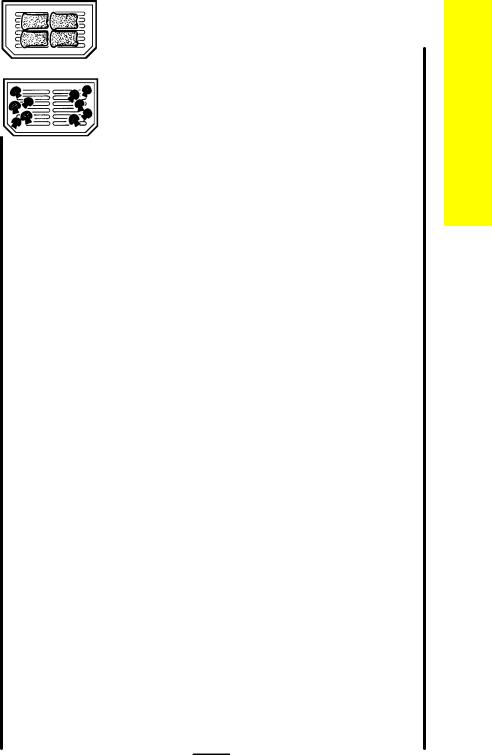
L Y R I C 5 0 G d
Preheating
You don't usually need to preheat the grill. You may wish to preheat it for a couple of minutes when you are cooking steak or when browning food.
Putting food on the trivet
Place food such as toast, teacakes and muffins towards the centre of the trivet.
Place food which needs a more gentle heat such as tomatoes and mushrooms towards the edge of the trivet.
Arrange meat, meat products and fish to suit their thickness and how you like them cooked.
Warming plates
When using the cooker you can use the shelf below the grill pan to warm two plates. Do not put plates on the shelf when the grill burner is turned on and the grill pan is not in place. The heat from the burner will damage the plates.
The grill
7
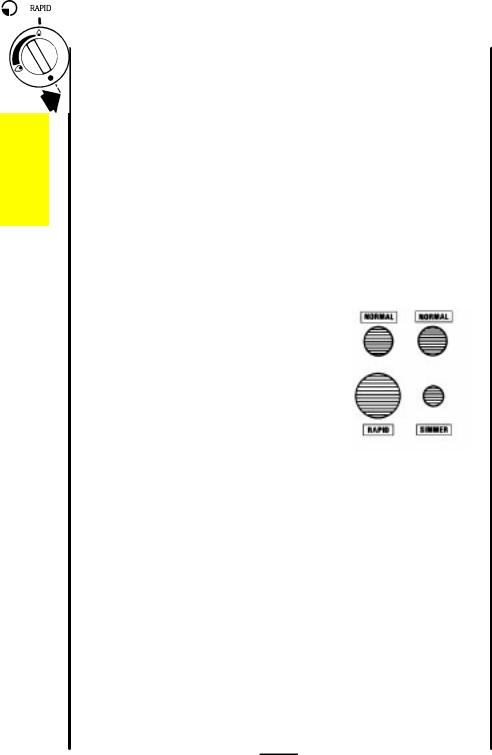
The hotplate
L Y R I C 5 0 G d
The hotplate
Heat control
The hotplate control knobs turn to the left from 'OFF' to 'HIGH' and then to 'LOW'. You can adjust the heat by turning the control between the highest and lowest settings. These are shown as a large and a small flame symbol.
Burner sizes
The hotplate has three burner sizes to suit different types of cooking:
Largest burner (Rapid) - use a large pan for food such as chips.
Medium burners (Normal) - use for everyday cooking.
Small burner (Simmer) - use for simmering food such as soups and stews.
The largest pan which you should use on any burner is 230mm (9"). The base of the smallest pan should not measure less than 100mm (4").
8
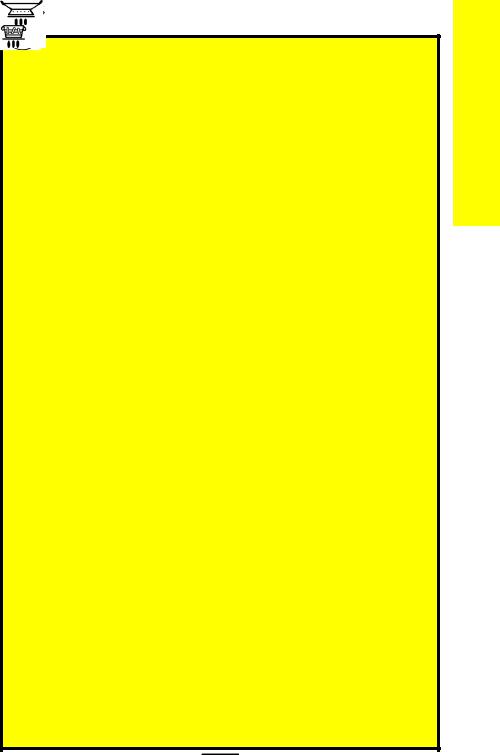
L Y R I C 5 0 G d
For your safety
1Take care to avoid burns and scalds when you are reaching across the hotplate.
2Use pans with flat bases. They are more stable than pans which are warped.
3Do not use pans with very heavy handles which cause the pan to tip.
4 |
Put pans on the centre of the burners. |
5Position pan handles so they cannot be accidentally knocked.
6Take extra care when you are deep fat frying. Do not cover the pan with a lid.
Do not leave a pan unattended. If the pan catches fire, leave it where it is and turn off all controls.
Place a damp cloth or a fitting lid over the pan to smother the flames.
Never put water on the fire.
Leave the pan to cool for 30 minutes.
7If you are using a Wok we recommend it has a flat base as it will stand stable on the pan supports. If you use a round based Wok with a collar support, the collar must be of the open wire work type. A closed collar will affect the performance of the burner. Before you use the Wok make sure that the collar is stable on the pan supports. Always follow the instructions that come with the Wok.
The hotplate
9
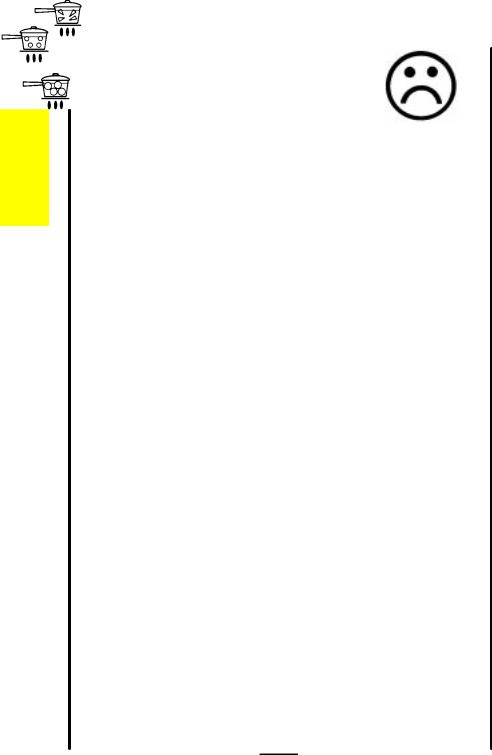
The hotplate
L Y R I C 5 0 G d
|
Helpful hints |
|
|
|
|
1 |
Keep flames under the base of pans. |
|
|
If the flames lick round the sides of |
|
|
the pans you are wasting gas. |
|
2 |
Only heat the amount of liquid you |
|
|
need. Do not overfill pans. |
|
3 |
Cover pans with a lid whenever |
|
|
possible. The food will heat up more |
|
|
quickly and there will be less steam |
|
|
in the kitchen. |
|
4 |
Try cooking more than one vegetable |
|
|
in the same pan, for example |
|
|
potatoes and carrots. |
|
5 |
Cut vegetables into smaller pieces. |
|
|
This way they will cook more quickly. |
|
6 |
A pressure cooker will save time and |
|
|
energy. |
|
10

L Y R I C 5 0 G d
The oven
Before you use the oven you should wipe it out with a damp cloth to remove any dust.
Heat zones
There are zones of heat within the oven. The temperature in the middle is the gas mark you have chosen. The top of the oven is slightly hotter and the lower shelf slightly cooler. The base of the oven is quite a lot cooler. You can make use of these heat zones when you are cooking foods requiring different temperatures all at the same time.
If you are cooking more than one tray of similar items, for example cakes or biscuits, swap the trays during cooking or you can remove the top tray when the food is cooked and move the lower tray to the higher shelf to finish cooking.
Preheating
You do not need to preheat the oven when casseroling and so on. Preheat the oven for baking or when you are cooking sensitive food
such as Yorkshire puddings, soufflés and yeast mixtures.
When you are cooking or reheating frozen or chilled food read the instructions on the packing.
When you need to preheat the oven, we recommend you do so for 20 minutes.
Oven shelves
You can slot the oven shelves in any of five positions. Positions are counted from the top downwards.
For safety the shelf will only pull out so far. If you want to remove a shelf completely pull it forward as far as it will go, raise the front edge and lift it out. To put the shelf into a different position keep the front edge raised, slot the shelf on to the runner, lower the front edge and slide the shelf in.
The oven
11
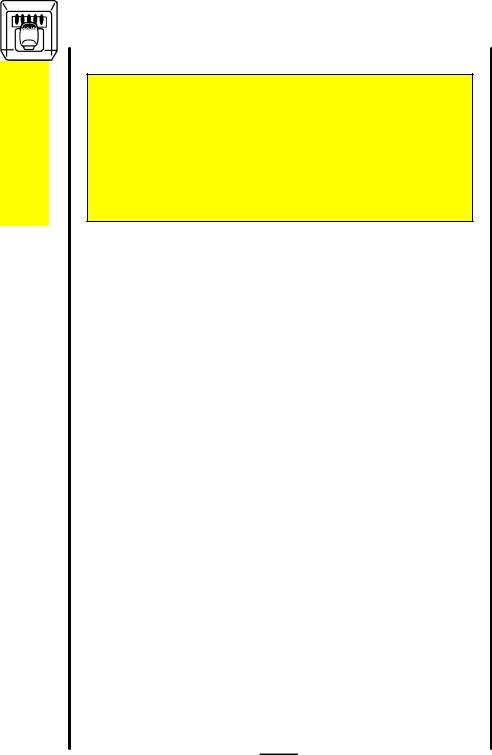
The oven
L Y R I C 5 0 G d
Baking trays and dishes
For your safety
Never place cooking dishes, trays and so on over the oven burner. This will damage the cooker as well as the ovenware and possibly the floor covering underneath the cooker.
Leave a gap of 13mm (½") between all dishes and the sides of the oven so the heat can circulate properly.
Do not push dishes too far back as food will burn if it overhangs the burner flames.
For the best results we recommend that you use a baking tray which is 310mm (12") square. If you use a tray or tin which is larger than this, you may need to turn it round during cooking.
Place single dishes on the centre of the shelf. You may need to turn large items around during cooking.
Condensation
Condensation may form on the cooker. This is quite normal and nothing to worry about. The condensation forms when heat and moisture are present, for example during cooking. Whenever possible try to make sure that food which contains a lot of moisture for example casseroles are covered. If you do notice any condensation, wipe it up straight away.
12
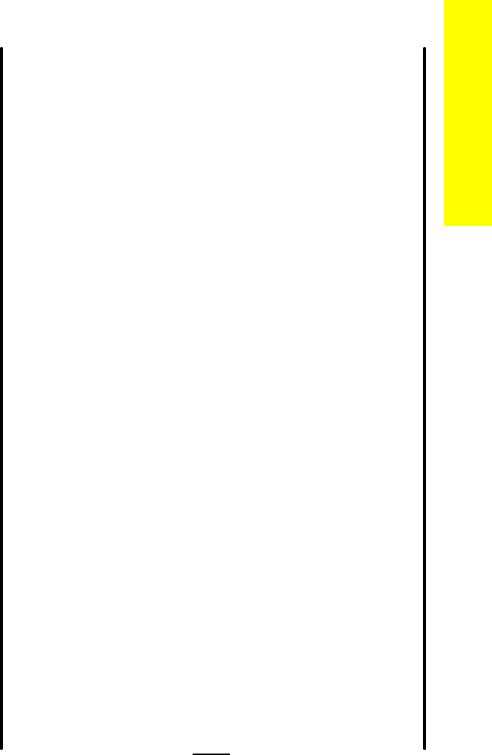
L Y R I C 5 0 G d
Roasting
For best results we recommend open roasting using minimal fat or oil to prevent splashing.
It is not necessary to cover meat or poultry or wrap food in foil when roasting as this restricts the circulation of heat and will lead to extended cooktimes.
If you are using a roasting bag or cover chicken breast with foil, be prepared to allow an extra 10 - 15 minutes for each 1/2kg (1lb).
When cooking large items such as turkeys, the use of foil may be required to prevent the breast becoming dry before the rest of the bird is fully cooked.
The oven
13
